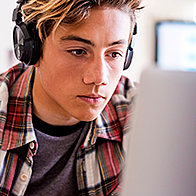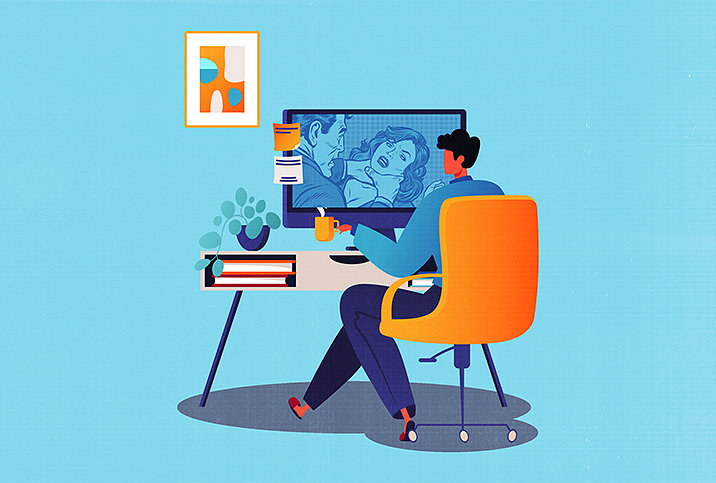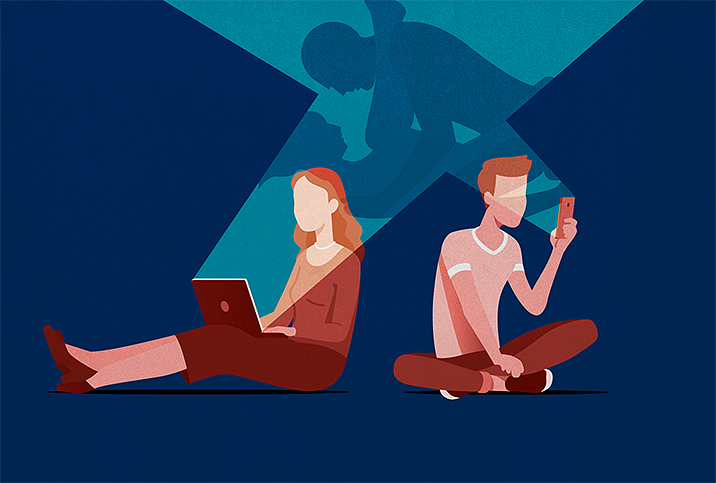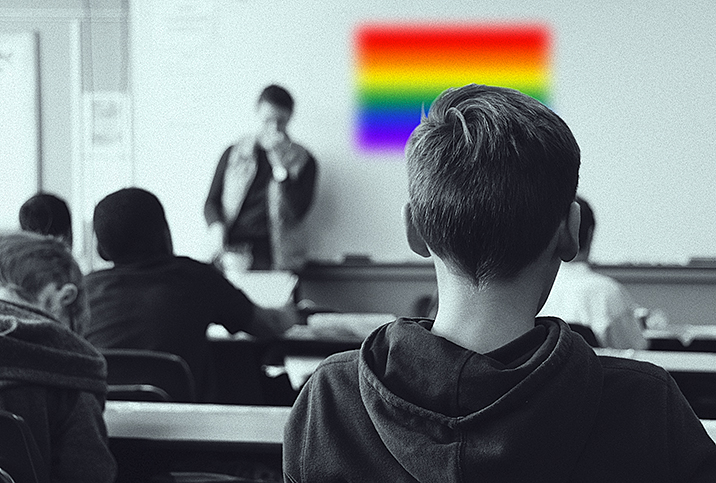Without Sex Ed, Teens Turn to Porn

Sex education is constantly under fire in America. It's a highly politicized topic, with curriculum varying from state to state, even by school district.
Today, only 24 states mandate sex education, and only 13 states require the education to be medically accurate. States can choose what aspects of sex education to emphasize—such as contraception, abstinence and sexual orientation—and they can cover topics with a positive or negative slant.
A 2008 study by the University of Washington indicated that states with a lack of comprehensive sex ed affects public health via increased teen pregnancy and increased STI rates.
Despite the disparity in education, a lack of access to sex ed has never thwarted teens from satisfying their curiosities or questions about sex. But since state legislatures hold the power in deciding who gets a sexual education, and what kind, where are kids supposed to get the information they need?
The answer is accessible within microseconds after an internet search: mainstream porn.
What do we learn from porn?
Teens watch significantly more porn than their parents, and a January 2021 study published in Archives of Sexual Behavior revealed that 18- to 24-year-olds cite porn as their most helpful source for information on how to have sex.
In her TED Talk "Is the Porn Brain Our New Sex Educator?" sex therapist and sex educator Yana Tallon-Hicks agreed that "porn has become how we learn to have sex," which she distinguished as a failure caused by a lack of sex education, not necessarily a criticism of porn.
Even people who receive what is called "comprehensive sex ed" feel that it's inadequate as it frequently fails to cover varying sexual identities or gender expressions extensively, which watching porn might affirm. Again, porn fills the gaps.
What porn doesn't teach
One of the most frightening aspects of using porn as a substitute for sex ed is the lack of discussions around consent. In the aforementioned workshop, Tallon-Hicks asked, "How does the man know what she wants to do?"
"He just does," students answered.
Isy Abraham-Raveson from Yes to Consent, an organization that provides consent-based and shame-free sex ed, spoke to the dangers of this answer, explaining, "Consent is the basis for all sexuality," and it's more nuanced than you might think.
"Consent is so much more complicated than a yes or a no," Abraham-Raveson explained. "Consent requires communication: Asking questions, truly listening to both words and body language, saying when our feelings change or when we've changed our minds. Consent can be deciding we want to try something and then realizing we really didn't like it. Consent requires conversations about the risk of pregnancy, STIs and other risks. Power dynamics—age differences, gender dynamics, job roles, and so much more—have to be taken into consideration."
Without a multidimensional framework for consent, "the false sense that consent is simple—that if someone's not saying no, you're good to go. And if they do say no, they might not mean it," Abraham-Raveson added.
If teens replace a nuanced sex education program with performative pornography, there's no consent discourse other than its absence—which is like learning to drive without putting a seat belt on or knowing where the brakes are.
Other lessons porn frequently teaches are that the apex of sex is male ejaculation, and that women can orgasm in virtually any position, despite the common understanding that clitoral stimulation is often required to achieve orgasm. In a recent Indiana University national survey, "only 1 in 6 boys and 1 in 4 girls believed that women in online porn were not actually experiencing pleasure."
Abraham-Raveson pointed out some of the other inaccurate lessons a teen could pick up from porn. "Mainstream porn pushes a false narrative that sex doesn't require verbal communication and doesn't involve messiness, mistakes, adjustments, checkins, laughter, feelings, awkwardness and all the other pieces of sex we don't see in mainstream porn."
There's also rarely a display of foreplay in porn, which is antithetical to how most women experience arousal. Further, it focuses on a male-centric experience of being ready for sex at any second and misadvises that women are always ready for sex spontaneously, too.
Sex educator Emily Nagoski pointed out the differences in arousal between men and women in her book "Come As You Are," noting that 75 percent of men experience spontaneous desire, whereas only 15 percent of women do the same.
Unlike ethical porn that generally stays behind a paywall, easily accessible mainstream porn is more likely to perpetuate harmful and unrealistic beauty standards, and show little body diversity, such as larger bodies or bodies with disabilities.
"Mainstream porn centers on white, thin, hairless, able-bodied, cisgender bodies, which is not at all representative of reality, and very harmful to all of us in constructing one type of body as 'normal' and 'good,'" Abraham-Raveson explained.
Another lacking component is that porn rarely teaches safe sex. A 2016 study by the Australian Institute of Family Studies found, "Pornography use can shape sexual practices and is associated with unsafe sexual health practices, such as not using condoms and unsafe anal and vaginal sex."
Abraham-Raveson confirmed how messages in mainstream porn might shape sexual practices, in that there are "strict gender roles that people may feel pressured to replicate. Porn's overemphasis of certain sex acts may prevent people from getting to know their own bodies and what feels good to them."
Why teach porn literacy?
If sex ed is a hot-button topic, porn literacy is molten lava. After teaching a porn literacy and consent workshop for high school juniors and seniors at Columbia Grammar & Preparatory School in New York City, Justine Ang Fonte was forced to resign from her successful nine-year role as director of health and wellness due to defamation from The New York Post. Even though she received high praise from the students involved, some parents were enraged by the material in Fonte's workshop, even though sex educators felt the curriculum aligned with proper sex ed standards.
Teens have most likely stumbled upon porn (about one-third of all internet traffic is from porn sites). Though it might be uncomfortable for parents to realize this and hold conversations focused on porn literacy, what's more alarming is the potential for teens to see porn and be unable to discern what's real or not, harmful or not, and potentially dangerous or not.
Abraham-Raveson described a fundamental step in teaching teens to think critically about porn is to first establish what you see through the screen of your device is nothing more than male and female actors acting: "They have a script and a contract."
Teens have no way to gauge fiction versus reality, and porn literacy clarifies what you might see in sexually explicit media versus sex and consent in reality.
Abraham-Raveson offered other entryways into this conversation.
"We can talk about how different TV shows and movies feel [compared to] our real lives, and then look at how porn is similarly fictional and does not represent real sex," they said. "It's important to talk about the messiness of sex, that it's okay to stop in the middle to talk and change what's happening, that there's preparation and clean-up, and so much more you won't see in mainstream porn."
Teens have no way to gauge fiction versus reality, and porn literacy clarifies what you might see in sexually explicit media versus sex and consent in reality. Porn literacy teaches teens to make sense of what they are viewing.
The purpose of a porn literacy curriculum, championed in part by Emily Rothman at Boston University's School of Public Health, isn't to view porn through a positive or negative lens. The point is to acknowledge that adolescents will see porn, but to further understand that it's necessary to give them the tools of porn literacy to allow them to analyze what they see.
Tallon-Hicks ended her TED talk by urging viewers to declare the lack of sex ed as a public health crisis.
"The problem isn't porn," Tallon-Hicks said. "The problem is us. We've abandoned young people to learn about sexual pleasure from a pretend depiction of it."




















